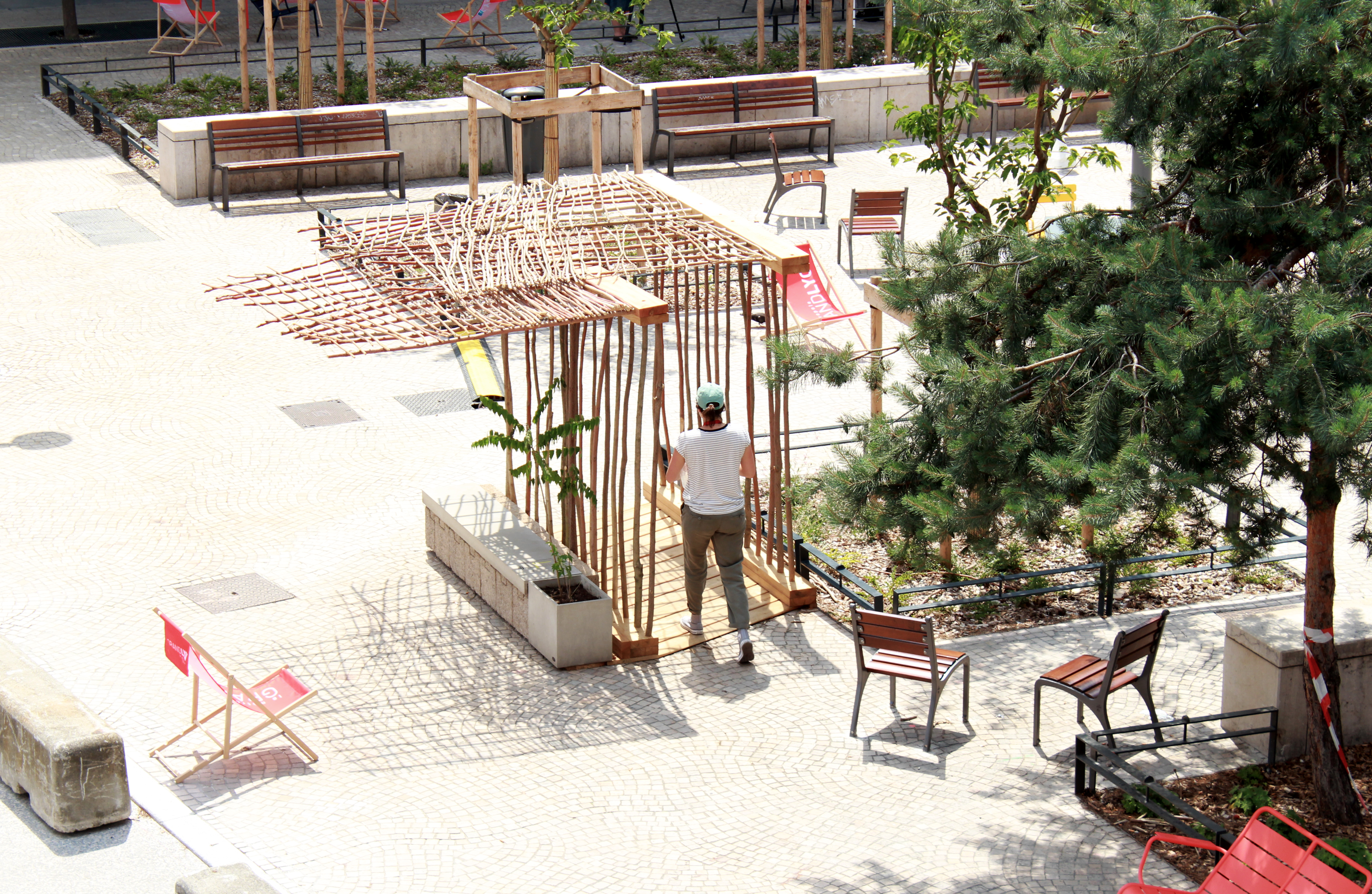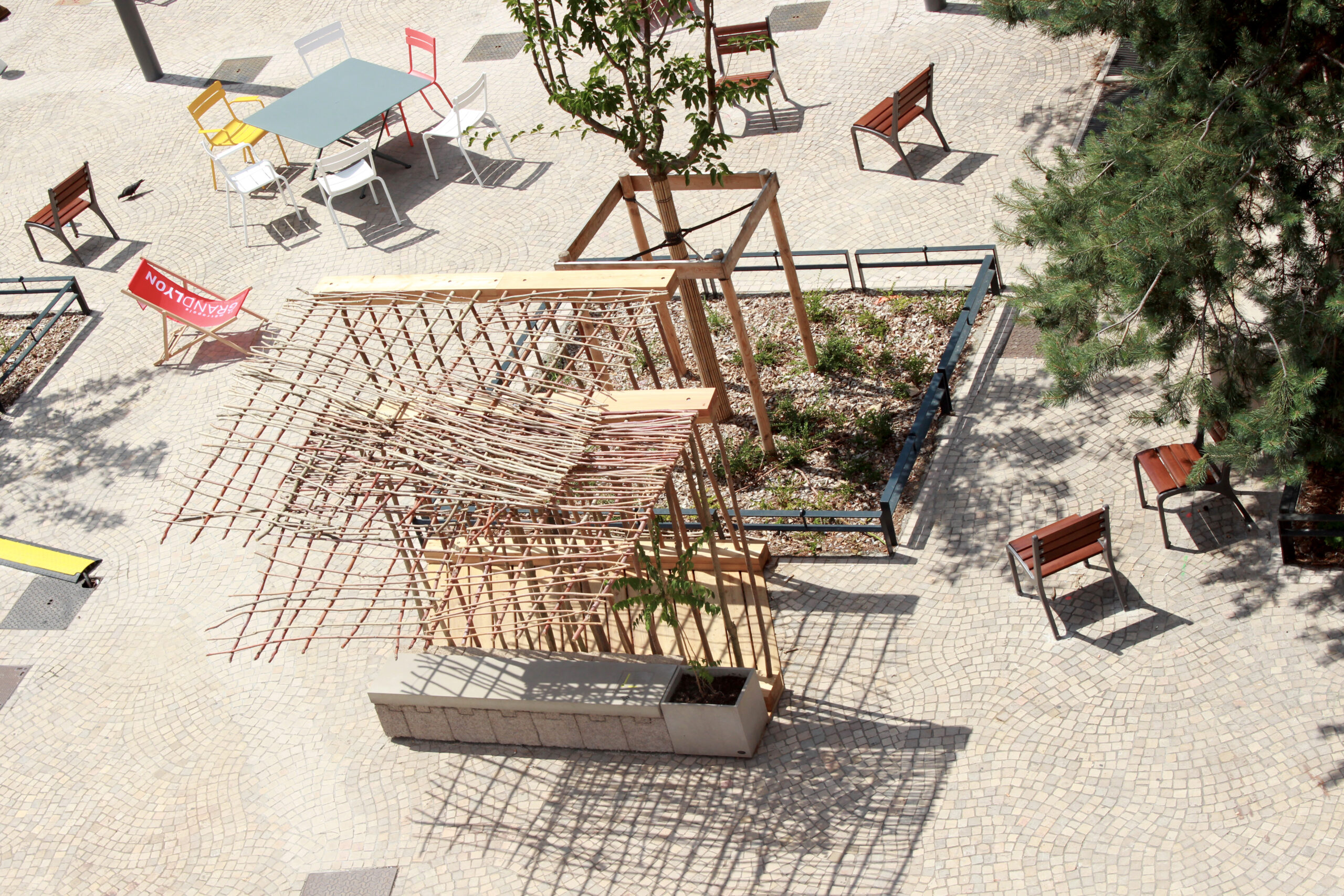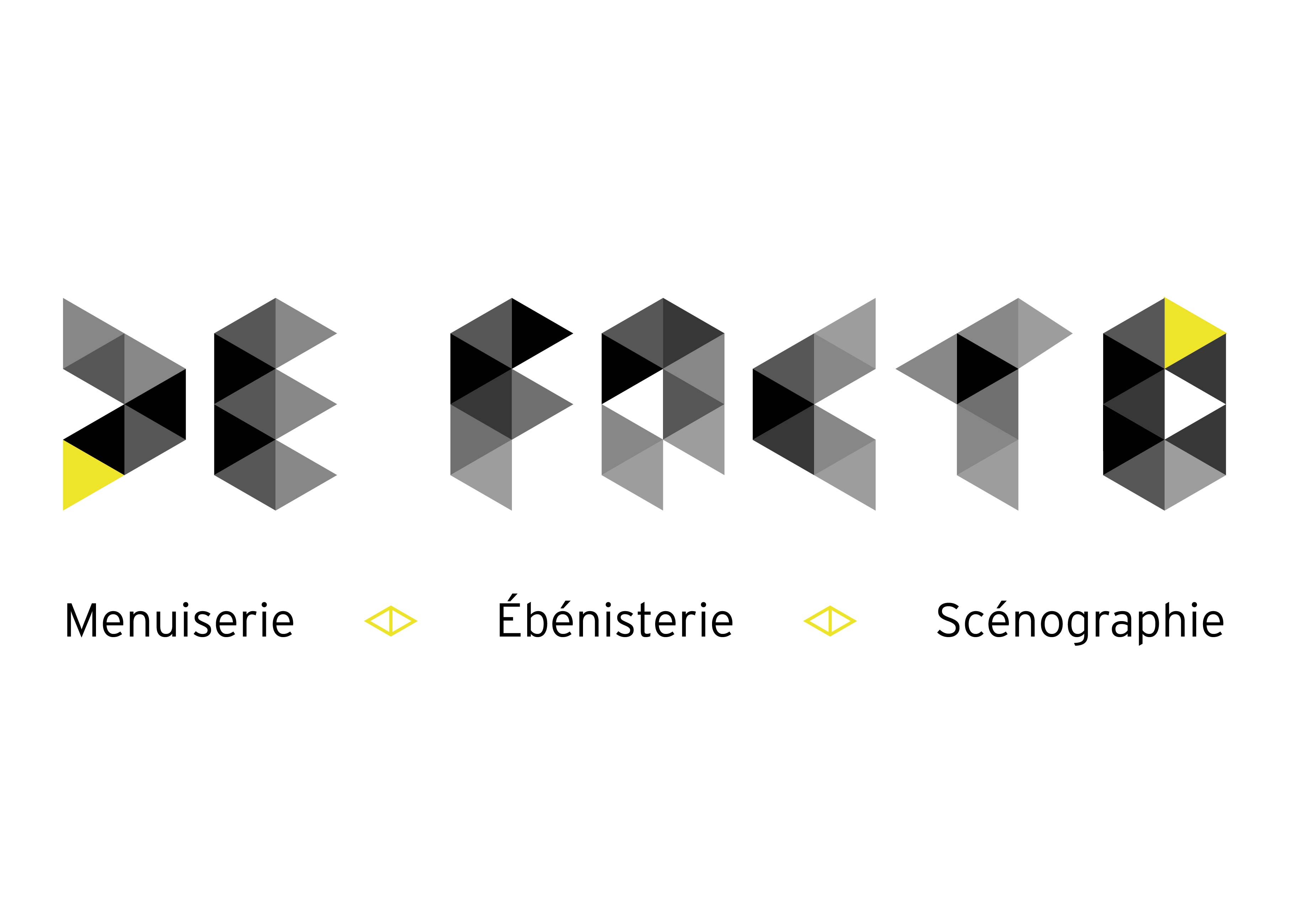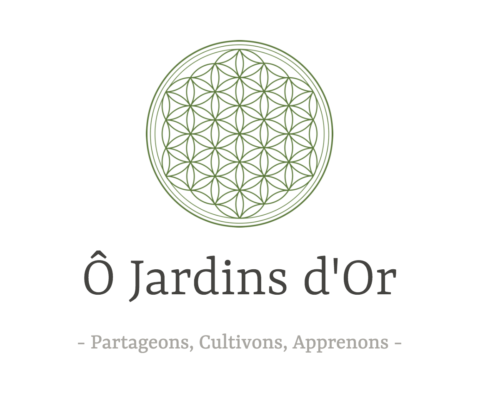Canopée explores the working possibilities of an invasive tree never before used in cabinet making. Its bench contains an embedded chip linked to a webpage to highlight the ubiquity of the Ailanthus tree in the Lyon region.
Canopée explore les possibilités mécaniques d’un arbre encore jamais exploité en ébénisterie en Europe. Cette assise connectée à une page web met aussi en lumière l’omniprésence de l’ailante dans la région lyonnaise.
Project context

Discovery

This project was a collaboration based on a shared interest in the Ailanthus altissima (commonly known as Tree of Heaven or Varnish tree), with the woodworker Célia Mazac.
As it develops along major roads and rivers with its powerful seed and roots system, this Asian tree is difficult to control. Because the Ailanthus also grows rapidly and is capable of reaching heights of 15 m in 25 years, it threatens indigenous flora. It is considered a vigorous noxious weed and is one of the worst invasive plant species in Europe and North America.
Le projet Canopée est une collaboration avec l’ébéniste Célia Mazac. Nous partagions une curiosité commune pour un arbre, l’Ailante glanduleux.
Cet arbre originaire d’Asie est difficile à contrôler car il se reproduit de manière très efficace, le long des axes de communication, grâce à un système racinaire très performant et à la pollinisation. Il a en outre une pousse extrêmement rapide, les spécimens peuvent atteindre 15m en 25 ans, ce qui menace la flore indigène. Il est considéré comme l’une des pires espèces invasives en Europe et en Amérique du Nord.

Map of Alanthus' location
Carte d'implantation de l'Ailante.
Source : Le Grand Lyon 2013
Problem statement
The Ailanthus is an abundant local material since its spread is still difficult to control.
People notice the trees because of their aesthetic qualities, but are unaware of their impact on biodiversity.
Since the creative possibilities of this wood are unknown in Europe, we decided to explore them and thus raise awareness on how widespread this species actually is.
L’Ailante est ressource locale abondante et sa propagation est encore difficilement contrôlable.
Les gens remarquent les arbres grâce à leurs qualités esthétiques, mais ne connaissent pas leur impact sur la biodiversité.
Puisque les possibilités créatrices de ce bois sont inconnues en Europe, nous avons décidé de les explorer et ainsi sensibiliser le public à cet arbre omniprésent.
Project planning
To ensure a good visibility for our project, we chose to participate in the Lyon City Demain Festival. Our design brief was on building an urban furniture. We drew sketches and explored different options by building several wood workshop test models. We then leveraged the different wood sizes and densities to create a scale model of a bench connected to a pergola.
Pour assurer un bonne visibilité à notre projet nous avons choisi de participer au Festival Lyon City Demain. Notre brief était à présent de construire un mobilier urbain. Après nombre de croquis et de tests en atelier nous avons construit une maquette, qui mettait à profit les différentes épaisseurs et rigidités du bois, une assise associée d’un brise soleil.
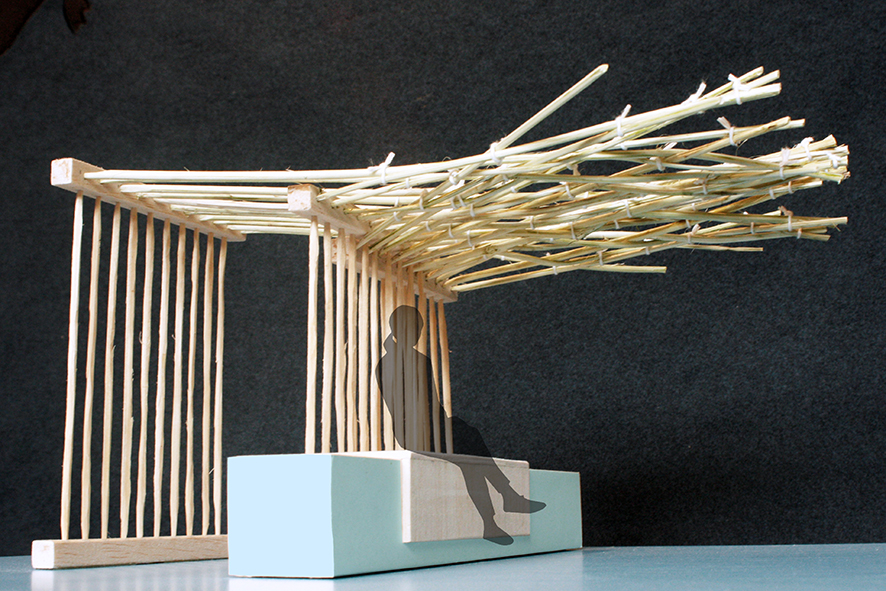

Afterwards we looked for sponsors. The Compagnie Nationale du Rhône quickly responded to our request with financial support and by locating land where we could collect the trees. As the CNR is in charge of the maintenance of some of the Rhône river banks, the presence of the Ailanthus is a familiar problem to them. Later on, the cement manufacturer Vicat offered to build our bench. We also contacted De Facto,a woodworker company, to build the rest of the structure.
The greatest challenge was that the structure had to be built and disassembled easily within the constraints of public space safety. So we adjusted our design by producing new technical solutions.
Nous avons ensuite recherché des sponsors. La Compagnie Nationale du Rhône a rapidement répondu à notre demande par un soutien financier et en nous indiquant des terrains où nous pourrions prélever des arbres. La CNR étant en charge de l’entretien de certaines berges du Rhône, la présence des Ailantes est un problème familier. Puis le cimentier Vicat nous a offert de construire notre assise. Nous avons ensuite contacté un atelier d’ébéniste pour la contruction du reste de la structure.
La plus grande difficulté tenait au fait que la structure devait pouvoir être assemblée et démontée tout en répondant aux contraintes de sécurité de l’espace publique. Nous nous sommes donc adaptées en produisant de nouvelles solutions techniques.




When springtime came, we collected new and larger trees to support the roof.
Finally, we organized Canopée’s transport from the woodworker’s workshop to the event site and then to its final destination: the Puces du Canal.
At each stage, I was the coordinator between the LCD festival, our sponsors and the manufacturers. And as the designer, I found alternatives to overcome obstacles and constraints.
Lorsque le printemps est arrivé nous sommes allées récolter de nouveaux spécimens plus volumineux pour supporter le toit.
Enfin nous avons organisé le transport de Canopée depuis les ateliers d’ébénistes jusqu’au site de l’événement, puis vers sa destination finale : les Puces du Canal.
A chaque étape j’ai eu le rôle de coordinateur entre LCD, nos sponsors et les fabricants. En tant que designer, j’ai aussi eu besoin de trouver des alternatives devant les obstacles.
Canopée
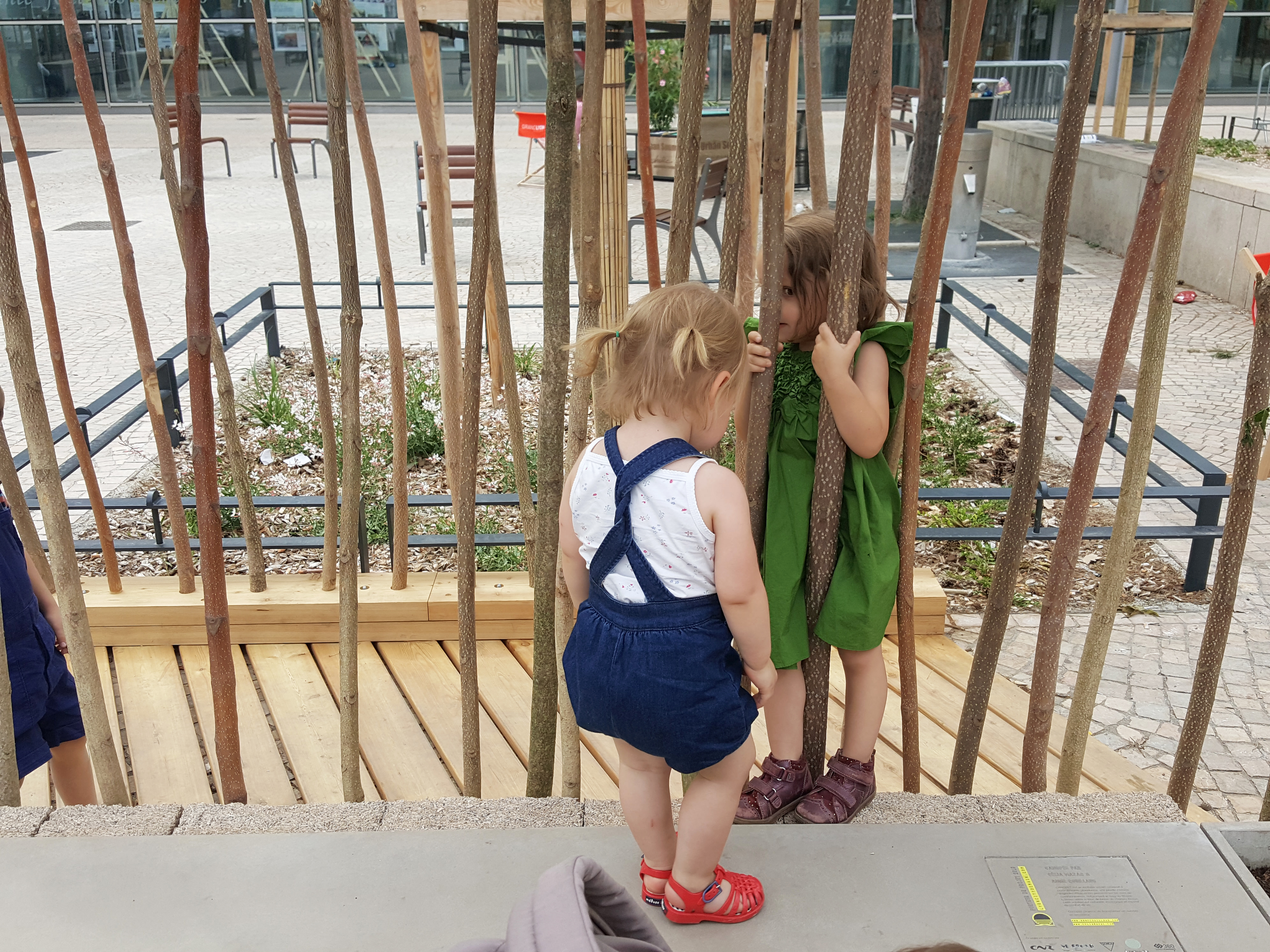
Canopea is a bench covered by a pergola. By using Ailanthus it brings value to an invasive species and helps people recognize this familiar tree.
The pergola is made out of Ailanthus wood while the seat is composed of Biosys, a mix of hemp and clay bricks, topped with a UHPC plate. Inside, a casted chip connects visitors to a webpage, which shows the location of Ailanthus trees in the Lyon region.
Canopea was exhibited during the Lyon City Demain Festival at the Lyon Perrache train station entrance.
Canopée est une assise couverte par un brise soleil. En utilisant l’Ailante, elle valorise un nuisible tout en permettant au public d’identifier cette espèce familière.
Le brise soleil est fabriqué à partir de bois d’Ailante tandis que l’assise est composé de blocs de Biosys, un mélange de béton de chanvre, surmontés d’une plaque en BFUP. Moulée à l’intérieur, une puce permet de connecter le visiteur à une page web, localisant les spécimens d’Ailantes dans la région lyonnaise.
Canopée a été exposé à l’occasion du Festival Lyon City Demain, sur la place des Archives, à l’entrée de la Gare de Lyon Perrache.


